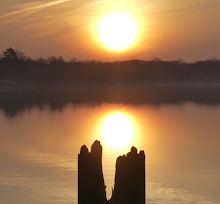Today was forecasted to be hot, dry and cloudless, but actually it has been cool, wet and with clouds covering the top of all mountains. The morning was reserved for a thorough visit at the Tautavel Musée de Pre-Histoire, but first we simply had to play mini-golf the original way using clubs.
The museum's exhibits were information-heavy but generally well done and providing in-depth presentations about the Homo erectus and Homo neanderthalensis in Europe, especially in France, during the past 450,000 years.
Despite their very distant ancestry to me these first Europeans seemed almost familiar as they lived the hard but free life among caribou and muskoxen (and other great wildlife).
After Tautavel, we tried to visit and see one more Cathar fortress. However, it was veiled in clouds.
Soaring just beneath the cloud level were four amazing and giant birds: Bearded Vultures.
Driving south towards the distant Marquixanes, we passed through the gorgeous Gorges de Galamus, a shortcut that is absolutely stunning in all aspects and that calls for some daring driving.
The Ermitage Saint Antoine clings to the sheer rock wall in the middle of the gorge. A seemingly impossible place to settle and live, even for a dedicated hermit. Natural caves in the gorge have offered living spaces for hermits since the 7th century and until 1930!
South of the gorge we encountered a genuine Roman aqueduct, still in great shape.











































































